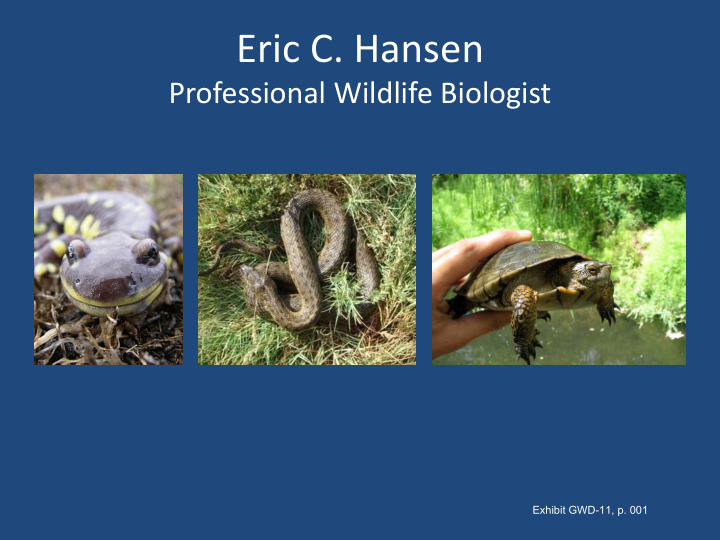



Eric C. Hansen Professional Wildlife Biologist Exhibit GWD-11, p. 001
Giant Garter Snake Historic Decline and Plan for Recovery Grasslands Ecological Area Mendota Wildlife Area Exhibit GWD-11, p. 002
• 2017 USFWS Recovery Plan calls for at least 12 preserves in San Joaquin Valley wetlands that receive CVP water from the Delta. • Water availability and reliability is critical to species recovery: USFWS will work with USBR and SWRCB to secure it. • Long-term success requires monitoring that includes a 3-year drought period to “ensure that giant garter snakes are no longer threatened by an insufficient water supply.” Exhibit GWD-11, p. 003
• Recovery Plan takes an ecosystem approach that will also assist other species • San Joaquin and Tulare Basin Recovery Units include all CVPIA refuges south of the Delta • Southernmost known breeding population is in the Grasslands Ecological Area Exhibit GWD-11, p. 004
CVP Water Uses and Wildlife Benefits on Refuges • Aquatic habitat required for breeding and genetic diversity • Wetland vegetation provides cover from predators and foraging habitat • Production of small fish, tadpoles, and frogs for food supply Exhibit GWD-11, p. 005
Potential Impacts of WaterFix Project • Loss of aquatic habitat in spring and summer, and reduced food supply decreased mating and survival, unstable reptile and amphibian populations, likely extirpation of giant garter snake in San Joaquin Valley • Reduced wetland plant production increased predation, lower survival rates • Failure to achieve Recovery Plan goals loss of genetic diversity, decline of species Exhibit GWD-11, p. 006
Recommend
More recommend